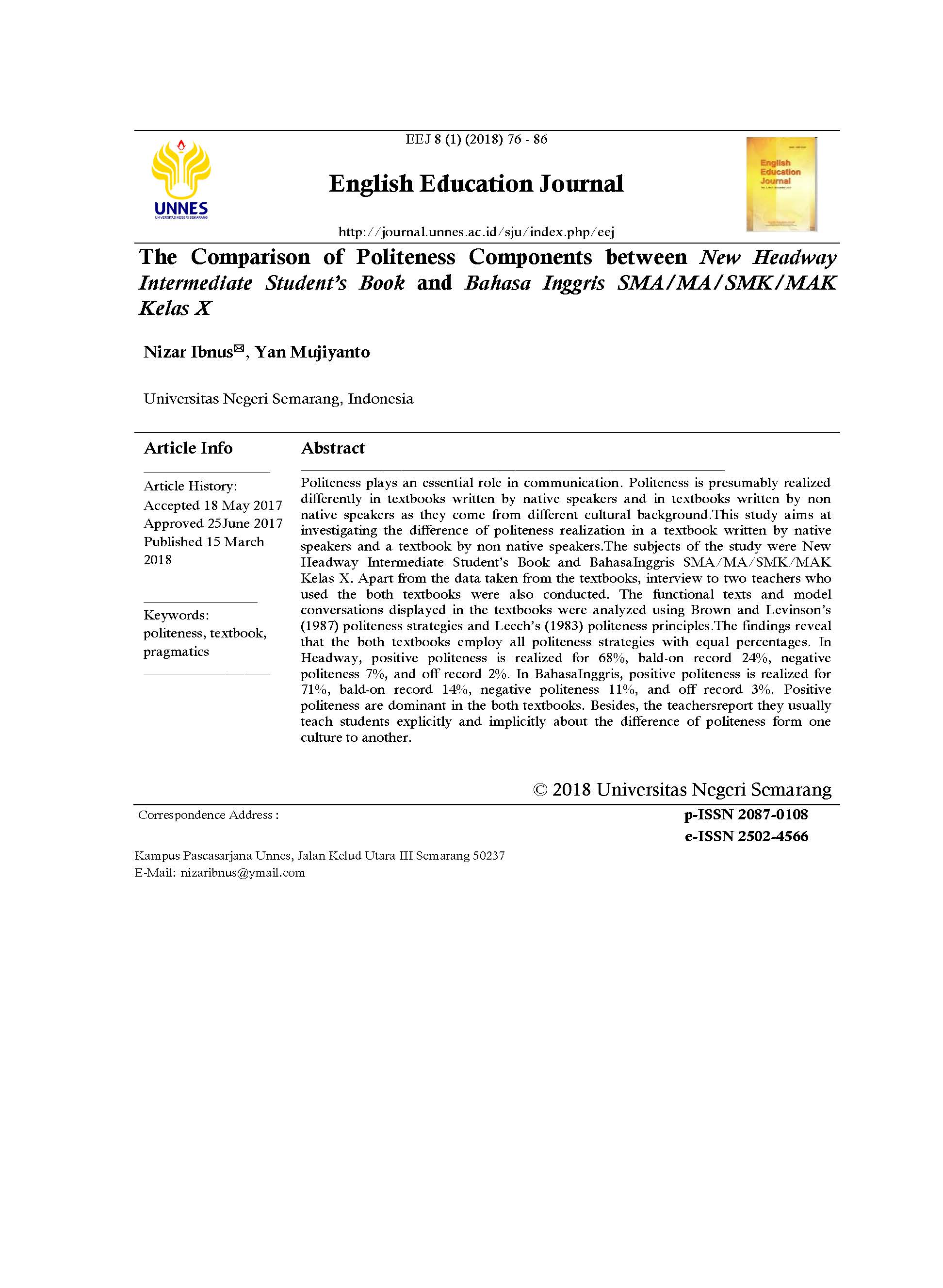The Comparison of Politeness Components between New Headway Intermediate Student’s Book and Bahasa Inggris SMA/MA/SMK/MAK Kelas X
##plugins.themes.academic_pro.article.main##
Abstract
Politeness plays an essential role in communication. Politeness is presumably realized differently in textbooks written by native speakers and in textbooks written by non native speakers as they come from different cultural background.This study aims at investigating the difference of politeness realization in a textbook written by native speakers and a textbook by non native speakers.The subjects of the study were New Headway Intermediate Student’s Book and BahasaInggris SMA/MA/SMK/MAK Kelas X. Apart from the data taken from the textbooks, interview to two teachers who used the both textbooks were also conducted. The functional texts and model conversations displayed in the textbooks were analyzed using Brown and Levinson’s (1987) politeness strategies and Leech’s (1983) politeness principles.The findings reveal that the both textbooks employ all politeness strategies with equal percentages. In Headway, positive politeness is realized for 68%, bald-on record 24%, negative politeness 7%, and off record 2%. In BahasaInggris, positive politeness is realized for 71%, bald-on record 14%, negative politeness 11%, and off record 3%. Positive politeness are dominant in the both textbooks. Besides, the teachersreport they usually teach students explicitly and implicitly about the difference of politeness form one culture to another.
